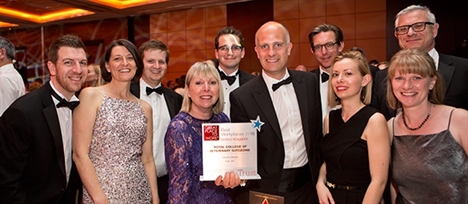11.06.15
How investing in staff engagement benefits all
The Royal College of Veterinary Surgeons (RCVS), the professional regulator for veterinary surgeons and nurses in the UK, was recently recognised as one of the best places to work in the country by the Great Place to Work Foundation – one of the few public sector organisations to earn this accolade. Chief executive Nick Stace explains how improving staff engagement became one of its key strategic aims.
Whether your key stakeholders are local taxpayers, patients, or, as in our case, members of a profession, telling them that you want to invest more time, money and effort in making your staff happier might raise a few eyebrows. After all, don’t members of staff get paid a wage, why do they need any additional perks? And don’t those wages come from our hard-earned money, whether that’s from tax or a subscription fee?
In times of budgetary restraint this is an understandable reaction. And yet, people don’t want to work in a place that makes them unhappy – good people will vote with their feet and leave, while those who remain will be at risk of becoming de-motivated and demoralised, which will be reflected in their work and the service they provide. My argument has always been that investing in staff engagement is the best investment you can make.
The argument comes down to what I call ‘enlightened self-interest’ and, from the day I took up the position of chief executive of the RCVS in 2012, I made improving staff engagement and wellbeing a key focus knowing that this would, in time, be reflected in the service we provide to the veterinary profession and the public.
An initial staff engagement exercise confirmed why such a strategy was needed – morale seemed to be low and some staff were exhibiting poor behaviours that had an impact on team cohesion.
The journey started by going back to basics and getting staff buy-in to our enabling purpose. We then unleashed the power of knowledge and ideas by asking staff to help us write the strategy.
We are now moving into the third phase, which is going from a parental relationship to that of a partner and giving people permission to make things happen themselves. That is why I have just asked staff to rewrite our staff policies and procedures: it’s their organisation after all. It is why I make sure we support staff ideas in setting up clubs and societies, such as yoga and netball; and it is why at our next staff away-day, we will hear from companies around the world that understand how to encourage staff to drive their businesses.
Communicating every day in every way possible has been critical to our success, while also remembering that different people receive information in different ways. For example, I hold weekly lunches with staff, we have our well-read ‘Loo News’ on the back of every toilet in the building, and there are also weekly emails, daily briefings and plenty of socials. Most importantly, we have come to actually like ‘hanging out’ with each other, but that doesn’t just happen by chance, it requires hard work and some difficult decisions along the way.
One of the most difficult decisions is asking people who are culturally not right for the organisation to move on. It’s a subject I took to every member of staff and asked them whether they were really prepared for a difficult period of people acclimatising, or not, to the importance of having the right culture. With almost no exceptions, everyone was up for the journey, and not just the fun-sounding bits. It was, in fact, the managers who were slightly more worried!
This new atmosphere has had a very clear effect on what we provide to the profession and public – for example, we have instituted service standards for all departments, which our staff wrote and are committed to meeting and we have overhauled our complaints system to make it faster and to improve levels of communication – to name but two things.
Our dedication to staff engagement has also been very clearly recognised and rewarded. In May, we were recognised as one of the UK’s top 50 medium-sized organisations to work for by the Great Place to Work Institute.

We were the only public sector organisation to rank this year, and this was in recognition of the fact that, in our 2014 survey, 91% of staff felt this was a great place to work – compared to 52% the previous year.
While it may seem like we may have ‘made it’ in terms of staff engagement, I consider it a job only partially done. The next challenge will be sustaining such high levels of satisfaction as, quite rightly, staff expectations do not suddenly peter out but will only grow! It is also a journey and will always be just that, you never actually arrive at the destination but along the way great things happen.
(Image of NicK Stace, top, copyright RCVS)